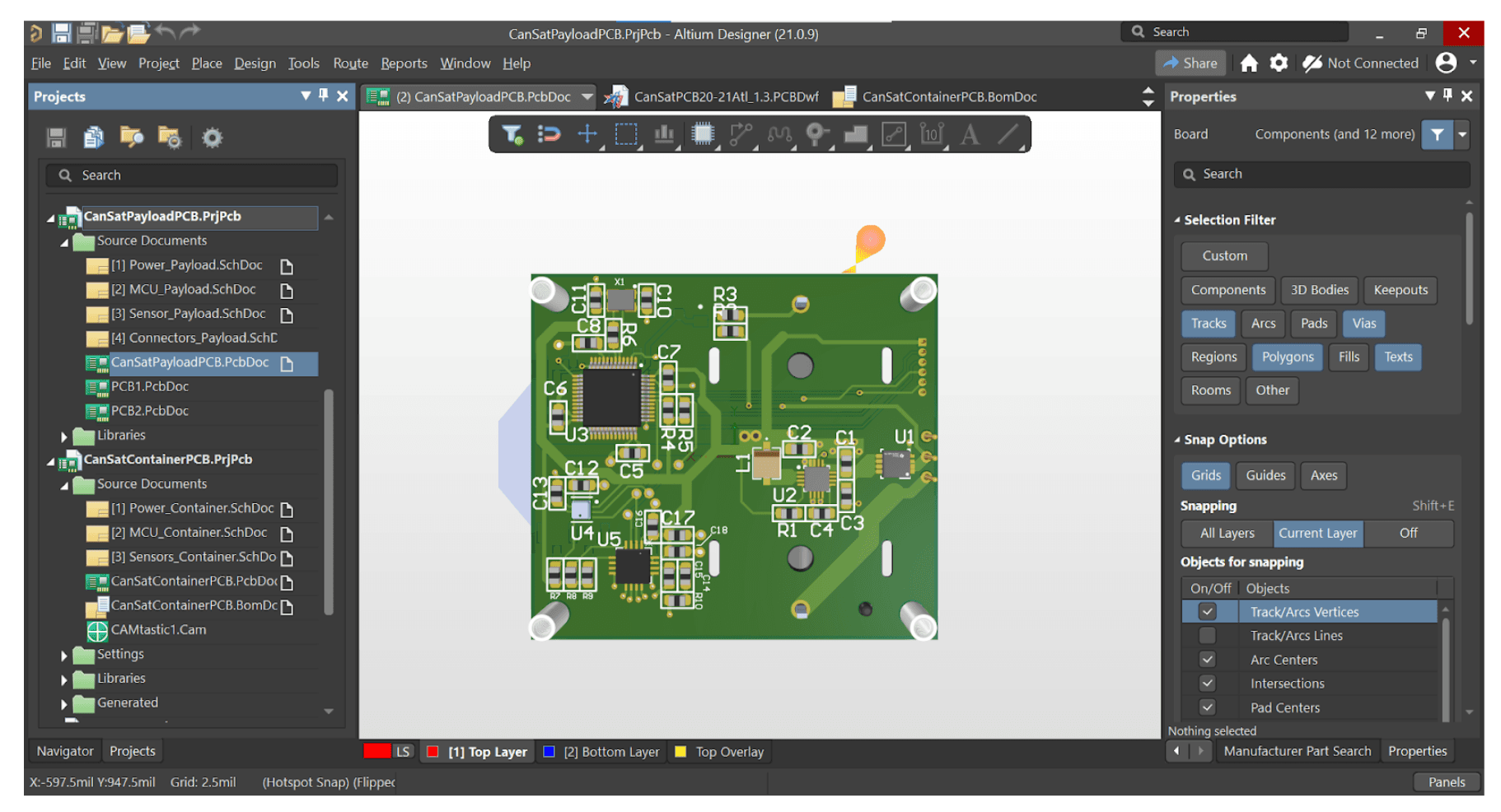UCI CANSAT
Projects
2020 - 2021
Project Definition
Planning
This year’s mission is to design a container and two auto-rotating maple seed science payloads. The CanSat will be launched to 700m using a high-powered model rocket. The CanSat then descends using parachute at 15 m/s. At 500m, the first payload is released and the second payload will be released at 400m. These payloads will rotate and descend slower than 20 m/s. While descending, the container will collect its own telemetry as well as telemetry from both payloads.
Problem Statement
Our competition project involves designing and building a CanSat, consisting of a container and two science payloads that will descend from an altitude of 670 to 725 meters. The container and payload descend together at 15 m/s until 500 meters, where the first payload is released to rotate and descend at less than 20 m/s, followed by the release of the second payload at 400 meters. The payloads are equipped with sensors to measure air temperature, pressure, and rotation rate, transmitting data in real-time to the container, which relays it along with GPS, pressure, battery voltage, and an audio beacon. Our goal is to perform well in the CanSat Competition, ensure all teammates gain engineering design experience, and meet UCI's MAE Department requirements for senior design. The launch system is provided by the organizers, while we focus on CanSat and ground station design and construction.

Team Goals
Design and build a CanSat that meets all competition requirements.
Provide all team members with practical experience in the engineering design process.
Fall: Complete research, design, resource procurement, and initial prototypes; submit Preliminary Design Report.
Winter: Focus on manufacturing, refining designs for prototype two, and completing the Critical Design Review (CDR).
Spring: Conduct testing, address any issues, and prepare for competition after finals.
CanSat Competition Requirements
Major Components
While there are 66 requirements published by the CanSat Competition. The most important requirements regarding CanSat's design are listed below:
- Total mass of the CanSat (science payloads and container) shall be 600 grams +/- 10 grams.
- CanSat shall fit in a cylindrical envelope of 125 mm diameter x 400 mm length.
- The descent rate of the CanSat (container and science payload) shall be 15 meters/second +/- 5m/s.
- The science payload shall have a maximum descent rate of 20 m/s.
- The science payload will be released at 500 m and 400 m.
- The science payload shall measure altitude using an air pressure sensor, air temperature, and rotation rate as it descends.
- The container shall include a GPS sensor to track its position, pressure sensor to measure altitude, and a battery voltage sensor.
- Each team must develop a ground station to plot sensor data in real time.
- The CanSat must survive 15 Gs launch acceleration, and 30 Gs shock. Electronics must be secured and, with the exception of sensors, enclosed.
- The total cost of the CanSat shall be under $1000, not including ground station equipment.
Our Works
Mechanical
The mechanical team completed designs and calculations for the container and payload. We calculated the descent velocities of the parachute and wrote python sizing scripts to estimate the size of the maple seed payloads to achieve the desired velocity that the competition required. In addition, we completed the SolidWorks 3D Models, drafted drawings, and ran FEA structural simulations on the container to withstand 15G launch acceleration and 30G shock.

Figure: Container FEA Analysis

Figure: Payload PCB Rendering
Electrical
As for the software and electrical team, all electronics components (sensors, capacitors, resistors, ect.) have been selected and the container and payload PCB designs are completed. Firmware to read the sensor data and ground station is being completed. One of the prototype payload PCB boards have been completed and is currently being tested.